Gould’s Pathophysiology for the Health Professions 7th Edition – Test Bank
Chapter 01: Introduction to Pathophysiology
VanMeter and Hubert: Gould’s Pathophysiology for the Health Professions, 7th Edition
MULTIPLE CHOICE
GOULD’S
1. Which of the following would be the most likely cause of an iatrogenic disease?
4. An inherited disorder
A combination of specific etiological facto
An unwanted effect of a prescribed drug
4. Prolonged exposure to toxic chemicals in the environment
ANS C
2. The manifestation of diseasearbest defined the
subjective feelings of discomfort during a chronic illness.
signs and symptoms of a disease.
factors that procese off chronicles
dearly indicators of the prodromal stage of infection.
ANS
3. The best definition of the term propos is the
percipitating factors causing an acute erinbe
number of remonto be expected during the course of achenicill
c. perdicted outcome or likelihood of recovery from a specific disease
exacerbations occurring during chronic illness.
ANS C
4. Which of the following is considered a systemic sign of disewe?
Swelling of the ke
b. Fever
c. Pain in the neck
4. Redrash on the face
ANS B
5. Etiology is defined as the study of the
causes of a
course of a
expected complications of disease
4. manifestations of disease
ANS A
6. A type of cellular adaptation in which there is a decrease in cell size is referred to as
gertrophy
b. metaplasia
Canaplasia
ANS D
7. A change in a tissuemarked by cells that vary in size and shope and show increased figures would be called
a. Metaplasia
batrophy
c. dysplasia
hypertrophy
ANS: C
8. A deficit of oxygen in the cells usually due to respiratory or circulatory problems is called
a. apoptosis.
b. ischemia.
c.hypertrophy
a necrosis.
ANS: B
9. When a group of cells in the body dies, the change is called
a. ischemia.
c. hypoxia
d. necrosis.
ANS: D
10. Rigorous weightlifting body building regimens may revult in the skeletal muscle cells
undergoing
a. hypertrogly
b. dysplasia
4 regeneration
ANS: A
11. The term-cancer sto
dysplasia
b. hyperplasia
6. metaplamia
d. malignant nooplasen
ANS: D
12. To which of the following does the term apoptosis refer?
Increased rate of minosis by certains
b. Ischemic damage to cells
c. Liquefaction of necrotic tissue
4. Peprogrammedollself-destruction
ANS: D
13. Which of the following statements TRUE
Aleration of DNA does not change cell function.
b. Durnaged olis may be able to repair themselves.
All types of cells die at the same rate.
ANS:
14. Cascation necrosses to an area where
cell proteins have been de natused.
bcells are liquefied by enzymes.
4. dead cells form a thick cheery substance.
d. bacterial invasion has occurred.
ANS: C
15. Routine application of sunblock to skin would be an example of
an iatrogenic cause of cancer.
ba preventive manite.
c. a precipitating factor.
d. a prodisposing condition.
ANS: B
16. A circumstance that causes a sudden acute episode of a chronic disease to occur istemed
latent stage
bpredisposing factor.
lincidence
d. precipitating factor.
ANS: D
17. The term homofferto
a. the causative factors in a particular disease.
b. maintenance of a stabile internal environment.
a condition that triggers an acute episode.
d. a collection of signs and symptoms.
ANS: B
18. Which term is used to describe a new and secondary or additional problem that arises after the
original disease has been established?
Manifestations
d. Complication
ANS: D
19. Pathophysiology involves the study of
the structure of the human body.
the functions of various organs in the body.
c. functional or structural changes resulting from disease processes.
d. various cell structures and related functions
ANS: C
20. Which of the following is the best definition of epidemiology?
The science of tracking the occurrence and distribution of diseases
The relative number of deathsealing from a particular disease
Identification of a specific disease through evaluation of signs and symptoms
d. The global search for emerging diseases
ANS: A
21. Which of the following can cause cell injury or death?
1. Nurokiv
2. Exposure to excessive cold
3. Excessive personati
4. Chemical tosias
12
24
4.1.3.4
4. 1,2,3,4
ANS: D
22. All of the following are part of the Seven Steps to Health EXCEPT:
Follow cancer screening guidelines.
b. Use sun block agents whenever exposed.
4. Participate in strenuous exercise pegular daily basis.
d. Choose high fiber, lower fat foods.
ANS: C
23. The tem disease refers to
the period of covery and return to a normal healthy stat
ba deviation from the normal state of health and function
the treatment measures used to promote recovery.
d. a basic collection of signs and symptoms.
ANS: B
24. A collection of signs and symptoms, often affecting more than one organ or system, that usually occur together in response to a certain condition is referred to as aan)
bmultiorgan disorder.
syndrome
d. Manifestations
ANS: C
25. All of the following statements are comect about cell damage EXCEPT:
The initial stage of cell damage often causes an alteration metabolic actions
b. If the factor causing the damage is removed quickly, the cell may be able to recover and retustate
c. If the noxious factor remains for an extended period of time, the damage becomes neversible and the cell dies
d. Initially, cell damage does not change cell metabolism, structure, or function.
ANS: D
26. Which of the following conditions distinguishes double blind studies used in health research?
Neither the members of the control group or the experimental group nor the person mining the treatment knows who is receiving the experimental therapy.
b. Both groups of research subjects and the person administering the treatment know who is receiving the experimental therapy.
The research subjects do not know, but the person administering the trut knows who is riving placebo or standard therapy
d. Ouly members of the control group know they are soriving standard therapy
ANS: A
27. If the data collected from the research process confirm that the new treatment has increased
eflectiveness and this called
the placebo-effect
evidence-based research
Mind research studi
d. approval for immediate distribution
ANS: B
WWW.TBSM.WS
28. A short-term illness that develops very quickly with perhaps a high fever of severe pain is called
chronic
4. manifestation.
ANS: A
29. The tem prognosis refers to the
period of recovery and return to a normal state
expected outcome of the disease.
4. mortality and morbidity rates for a given population.
d. typical collection of signs and symptoms.
ANS: B
30. When prolonged ischemia occurs to an area of the heart, the resulting damage is refemed to as
a atrophy
liquefactive necrosis.
c. apoptosis
dinfarction
ANS: D
31. During the evaluation process for a new therapy’s effectiveness and safety, a double blind
study may be conducted during
the first stage
the second stage.
the third stage
d. any of these stages.
ANS: C
32. Why are the predisposing factors for a specific disease important to health professionals?
To prodict the geognosis
To determine trans
c. To develop preventive measures
d. To develop morbidity statistics
ANS: C
33. Cell damage may be caused by exogenous sources such an
a abnormal metabolic processes.
certain food additives.


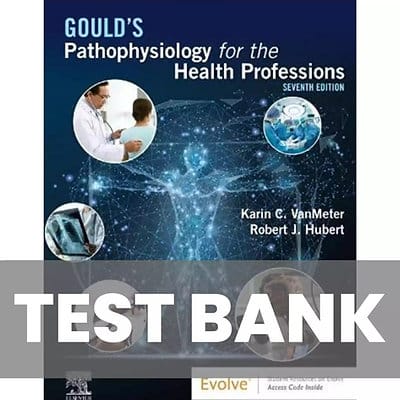
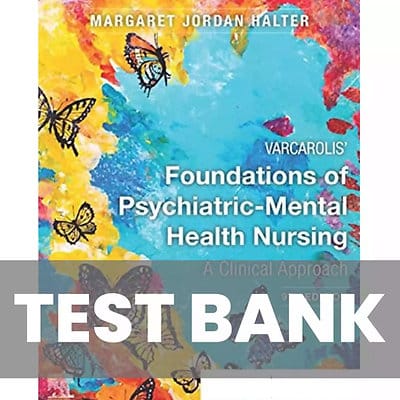
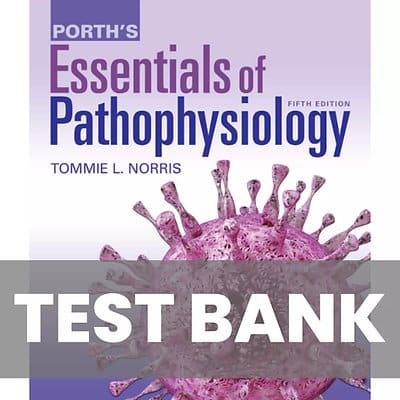
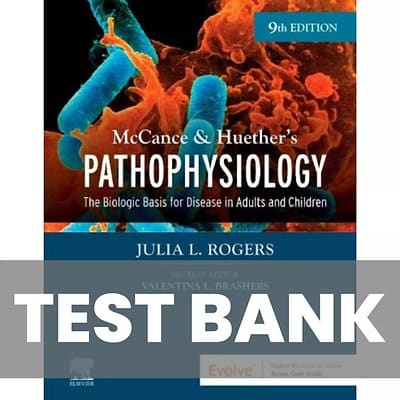



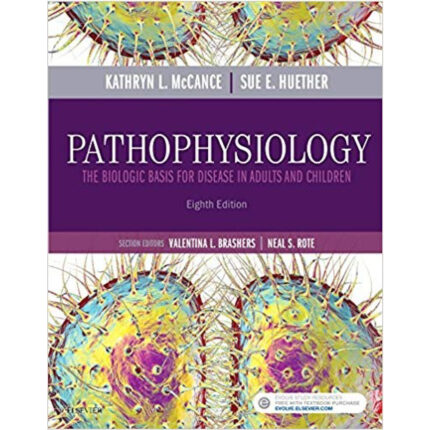


Reviews
There are no reviews yet.